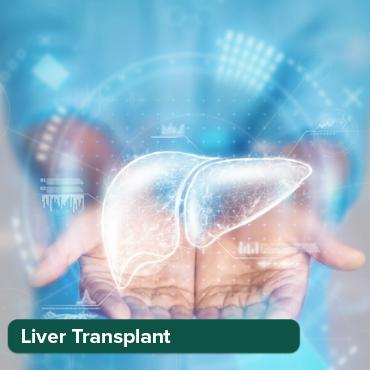
Cutaneous T-Cell Lymphoma: The Skin Cancer
30 Sep, 2024
 Healthtrip
HealthtripCutaneous T-cell lymphoma, a type of skin cancer, is a rare and complex condition that affects the skin and the immune system. It's a cancer that originates from the T-cells, a type of white blood cell that plays a vital role in fighting infections. When T-cells become cancerous, they can multiply uncontrollably, leading to a range of symptoms and complications. In this blog, we'll delve into the world of cutaneous T-cell lymphoma, exploring its causes, symptoms, diagnosis, treatment options, and what it's like to live with this condition.
What is Cutaneous T-Cell Lymphoma?
Cutaneous T-cell lymphoma, also known as mycosis fungoides, is a type of non-Hodgkin lymphoma that affects the skin. It's a slow-growing cancer that develops from the T-cells, which are an essential part of our immune system. Normally, T-cells help fight off infections, but in cutaneous T-cell lymphoma, they become cancerous and multiply uncontrollably. This leads to the growth of abnormal T-cells in the skin, causing a range of symptoms and complications.
Most popular procedures in India
Types of Cutaneous T-Cell Lymphoma
There are several subtypes of cutaneous T-cell lymphoma, including:
• Mycosis fungoides: This is the most common type, accounting for about 50% of all cases. It typically affects the skin, causing patches, plaques, and tumors.
Wellness Treatments
Give yourself the time to relax
Lowest Prices Guaranteed!

Lowest Prices Guaranteed!
• Sézary syndrome: This is a more aggressive type, characterized by a high number of cancerous T-cells in the blood and skin.
• Primary cutaneous CD30-positive lymphoproliferative disorders: This type is characterized by the presence of CD30, a protein found on the surface of cancerous T-cells.
• Subcutaneous panniculitis-like T-cell lymphoma: This type affects the fatty tissue beneath the skin, causing inflammation and pain.
Symptoms of Cutaneous T-Cell Lymphoma
The symptoms of cutaneous T-cell lymphoma can vary depending on the type and stage of the disease. Common symptoms include:
• Skin lesions: Patches, plaques, or tumors that may be itchy, red, or scaly.
• Skin rash: A widespread rash that may be itchy or painful.
• Swollen lymph nodes: Enlarged lymph nodes in the neck, underarms, or groin.
• Fatigue: Feeling tired or weak due to the cancer's impact on the immune system.
• Weight loss: Unintentional weight loss due to the cancer's impact on the body.
Diagnosis of Cutaneous T-Cell Lymphoma
Diagnosing cutaneous T-cell lymphoma can be challenging, as the symptoms are often similar to those of other skin conditions. A doctor may perform the following tests to diagnose the condition:
• Physical exam: A thorough examination of the skin and lymph nodes.
• Biopsy: A sample of skin tissue is taken and examined under a microscope for cancerous cells.
• Imaging tests: X-rays, CT scans, or PET scans may be used to check for enlarged lymph nodes or other signs of cancer.
• Blood tests: Blood tests may be used to check for abnormal T-cells or other signs of cancer.
Treatment Options for Cutaneous T-Cell Lymphoma
Treatment for cutaneous T-cell lymphoma usually involves a combination of therapies, including:
• Topical treatments: Creams or ointments applied directly to the skin to treat lesions.
• Phototherapy: Exposure to specific wavelengths of light to treat skin lesions.
• Systemic therapies: Medications taken orally or injected to treat the cancer.
• Radiation therapy: Targeted radiation to treat specific areas of the skin.
• Stem cell transplantation: A procedure that replaces cancerous T-cells with healthy stem cells.
Living with Cutaneous T-Cell Lymphoma
Living with cutaneous T-cell lymphoma can be challenging, both physically and emotionally. It's essential to work closely with a healthcare team to manage the condition and alleviate symptoms. Some tips for living with cutaneous T-cell lymphoma include:
• Stay informed: Educate yourself about the condition and its treatment options.
• Seek support: Connect with others who have the condition to share experiences and advice.
• Manage stress: Practice stress-reducing techniques, such as meditation or yoga, to cope with the emotional impact of the condition.
• Take care of your skin: Protect your skin from the sun, use gentle skincare products, and avoid irritants that can exacerbate symptoms.
Most popular wellness packages
Related Blogs

Melanoma: Understanding the Risks and Prevention
A guide to understanding melanoma risks, prevention strategies, and early

The Unseen Enemy: The Rise of Squamous Cell Carcinoma
Squamous cell carcinoma is a type of cancer that affects

The Unrelenting Fight: The Battle Against Skin Cancer
Skin cancer is a type of cancer that affects the

Basal Cell Carcinoma: The Most Common Skin Cancer
Basal cell carcinoma is the most common type of skin

A Fight for Every Breath: Living with Lymphoma
Discover the challenges and triumphs of living with lymphoma, a

Understanding Blood Cancer: Types, Symptoms, and Treatment
Learn about different types of blood cancer, their symptoms, and










